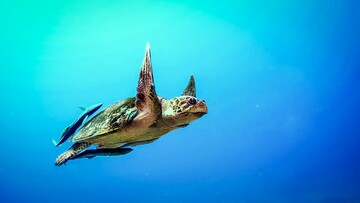What are some examples of liquids?

The ocean is a large body of liquid water.

The ocean is a large body of liquid water.
Liquids are a state of matter that can flow and take the shape of their container. They are made up of tiny particles that are close together, but not as close together as they are in solids. This means that liquids can flow, but they can't be squeezed into a smaller space.
Here are some examples of liquids:
- Water is the most common liquid on Earth. It is essential for life, and it is used for drinking, cooking, and cleaning.
- Milk is a liquid that comes from mammals. It is a good source of protein and calcium, and it is often used to feed babies and young children.
- Juice is a liquid that is made from fruits or vegetables. It is a good source of vitamins and minerals, and it is often enjoyed as a snack or a refreshing drink.
- Soda is a type of carbonated beverage that is made with water, sugar, and flavoring. It is often fizzy, and it can be a refreshing drink on a hot day.
- Oil is a liquid that is made from plants or animals. It is used for cooking, lubrication, and as a fuel.
Liquids are an important part of our world. They are used for many different things, and they are essential for life. Without liquids, we would not be able to survive.
Can a gas change into a liquid?
Yes, a gas can change into a liquid. When a gas cools down, it can turn into a liquid. For example, when water vapor in the air gets cold, it turns into water droplets and forms clouds. Another example is when you take a hot shower and the steam from the hot water turns into water droplets on the mirror.
Can a solid change into a liquid?
Yes, a solid can change into a liquid. When you heat a solid, it can melt and become a liquid. For example, if you take an ice cube out of the freezer and hold it in your hand, it will start melting and turn into water. Another example is when you heat chocolate, it melts and becomes a liquid that you can pour onto desserts.
What happens to the particles of a liquid when it is heated?
When a liquid is heated, its particles move faster and spread out more. The particles gain energy from the heat, which makes them move around more. This is why liquids can flow and take the shape of their container. For example, if you heat up water in a pot on the stove, the water particles will move faster and the water will start to boil.
What is the difference between a liquid and a gas?
The main difference between a liquid and a gas is how close their particles are and how fast they move. In a liquid, the particles are close together but can still move around. In a gas, the particles are much farther apart and move very quickly. For example, imagine a cup of water (liquid) and a balloon filled with air (gas). The water stays in the cup and takes its shape, but the air in the balloon can move freely and fill up the whole balloon.
What is the difference between a solid and a liquid?
The main difference between a solid and a liquid is how tightly packed their particles are and how they move. In a solid, the particles are packed closely together and can only vibrate in place. In a liquid, the particles are still close together, but they are free to move around and flow. For example, think of a block of ice (solid) and a cup of water (liquid). The ice particles are tightly packed and can't move around much, but the water particles can move and take the shape of the cup.

The ocean is a large body of liquid water.